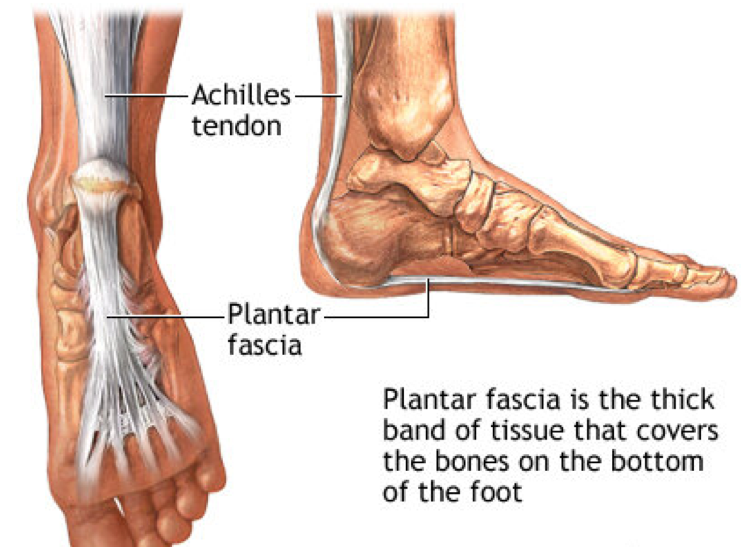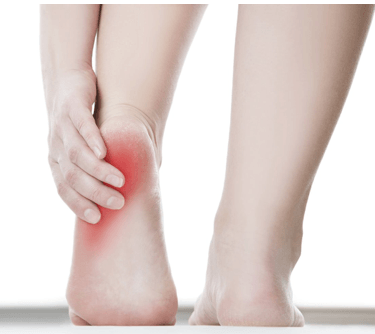
Plantar fasciitis refers to pain on the sole of the heel, that primarily involves a ligament-like structure that runs under the bottom of the foot called the plantar fascia. This condition is also known as plantar heel pain or heel spurs. It is one of the most common conditions affecting the foot, and will affect 1 in 10 people.
Plantar fasciitis is more common in females, people aged between 45 and 65, and athletes
There are several theories about what causes plantar fasciitis.
A common theory is that small amounts of trauma from mechanical stress in combination with altered blood supply changes the area where the plantar fascia inserts on to the heel bone. Usually, small amounts of trauma from mechanical stress will repair without problem. However, with an accumulation of excessive episodes of mechanical stress, the repair process fails leading to pain.
Although the plantar fascia is the most common cause of pain in the bottom of the heel, there are several other conditions that may cause pain in the bottom of the heel.
What are the symptoms of Plantar Fasciittis
Those with plantar fasciitis often describe a sharp pain upon first standing in the morning or after a period or rest, which will reduce with continued walking. This pain may return at the end of the day, especially after being very active. The pain is usually localised to the bottom of the heel.
The pain often follows a change such as new footwear, going on holiday, changing exercise patters, or putting on weight. Identifying what may have caused the pain can help to treat this condition.
Often the location of the pain can help determine the cause. The images below depict where pain may occur for different conditions.
Causes of plantar fasciitis
The cause of plantar fasciitis is uncertain, but there are two main theories. The first is that increased pressure from the ground compresses the tissues under the heel, causing pain. The second theory, is there is increased stress on the plantar fascia, and this causes pain at the spot where it inserts on the heel bone.
Despite the unknown cause, there are risk factors for plantar fasciitis,
which include:
Increased number of hours spent standing
Tight calf muscles
Those who are overweight
The presence of heel spurs (bone growths on the bottom of the heel).
Addressing these risk factors are an important method of managing plantar fasciitis. Contact a MyFeet Clinic for an appointment.




